Did you know that the largest spider ever recorded had a leg span of almost a foot? Spiders that size might sound like something out of a nightmare, but they exist! What is the biggest spider in the world? Prepare to be amazed as we reveal the top 10 biggest spiders in the world that roam our planet. From the Goliath birdeater to the giant huntsman, these colossal arachnids are more than just creepy-crawlies – they’re nature’s marvels. Whether you love them or fear them, these massive spiders are sure to leave you speechless. Let’s dive into the world of these extraordinary eight-legged giants!
1. Goliath Birdeater
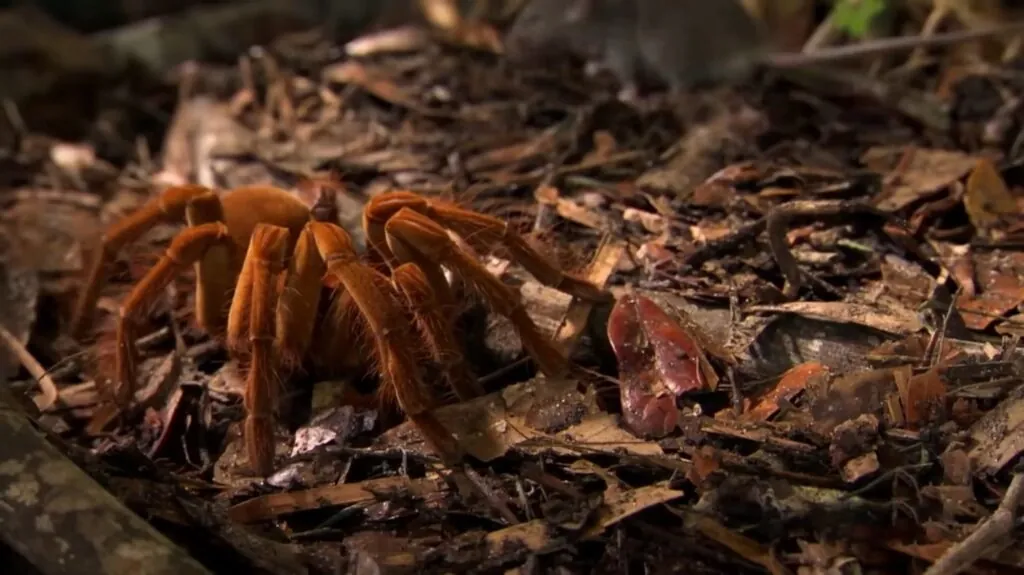
The Goliath Birdeater (Theraphosa blondi) holds the title of the largest spiders in the world by mass, weighing up to 175 grams (6.17 ounces). This enormous arachnid, native to the Amazon rainforest in Northern South America, boasts a body length of up to 13 cm (5.1 inches) and an impressive leg span reaching 30 cm (11 inches). Its size and weight make it a formidable presence in its habitat, where it preys on a variety of creatures, including insects, rodents, and small birds. The Goliath Birdeater’s robust physical characteristics and its predatory behavior contribute to its reputation as a remarkable and intimidating species among arachnids.
2. Huntsman Spider

The Huntsman Spider (Heteropoda maxima), known for its exceptional leg span, is the largest in this category, stretching up to 30 cm (12 inches). Despite its relatively modest body length of about 4.6 cm (1.8 inches), this spider’s long, sprawling legs give it a significant presence. Native to Laos, the Huntsman Spider prefers tropical forests and caves, where it uses its speed and agility to hunt prey. Although its body mass is less than that of the Goliath Birdeater, the Huntsman Spider’s remarkable leg span makes it one of the most visually striking spiders in the world.
3. Brazilian Salmon Pink Birdeater
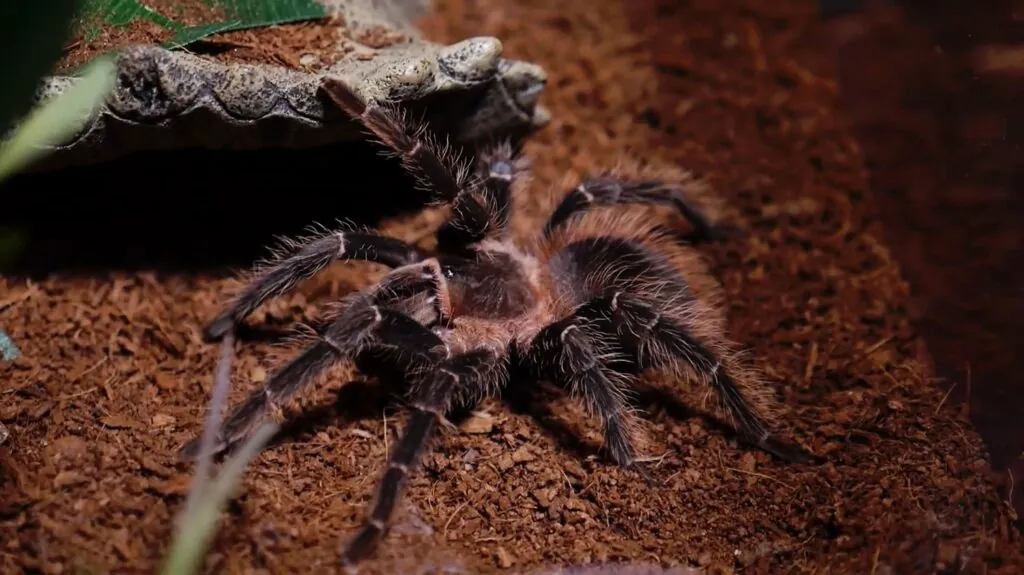
The Brazilian Salmon Pink Birdeater (Lasiodora parahybana) is one of the largest tarantulas in the world, with a body length of about 10 cm (4 inches) and a leg span reaching up to 28 cm (11 inches). Weighing over 100 grams, this spider is known for its significant body mass. Native to the forests of Brazil, it derives its name from the distinctive pink coloration on its legs. The Brazilian Salmon Pink Birdeater is a terrestrial species, often found in humid environments where it preys on insects, small rodents, and amphibians. Its impressive size and striking appearance make it a popular species among tarantula enthusiasts and researchers alike.
4. Grammostola anthracina
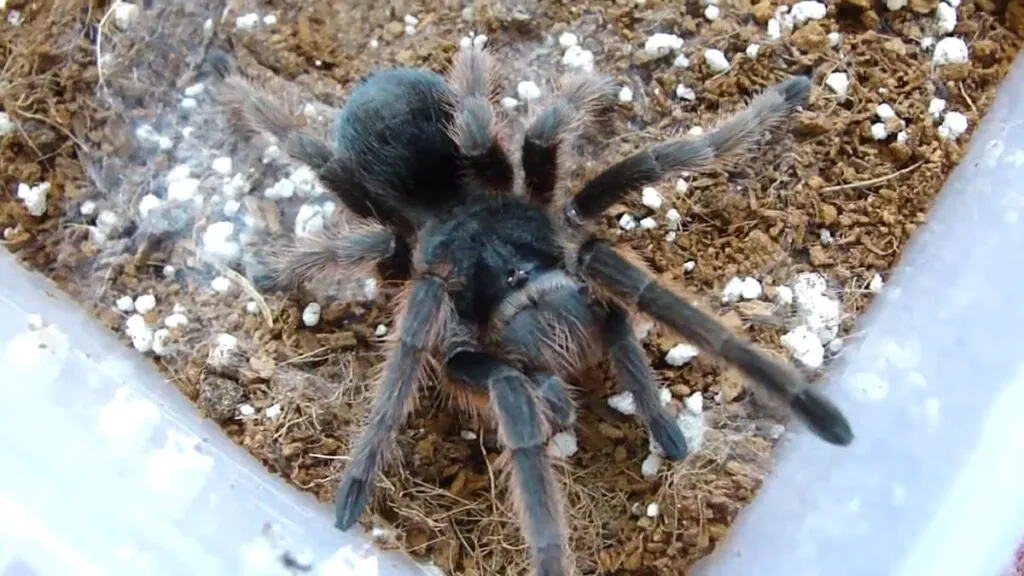
The Grammostola anthracina, a substantial tarantula native to Uruguay, Paraguay, Brazil, and Argentina, ranks among the largest spiders in the world. It features a body length of approximately 10 cm (4 inches) and a leg span exceeding 25 cm (10 inches). Although its body mass is slightly less than that of the Brazilian Salmon Pink Birdeater, the Grammostola anthracina is notable for its robust and formidable build.
Grammostola anthracina, one of the top 10 biggest spiders in the world, thrives in diverse habitats ranging from grasslands to forests, where it primarily feeds on insects and small vertebrates. Renowned for its docile nature, it is a favored species among tarantula enthusiasts and is often studied for its unique behavioral traits and adaptability.
5. Brazilian Giant Tawny Red Tarantula
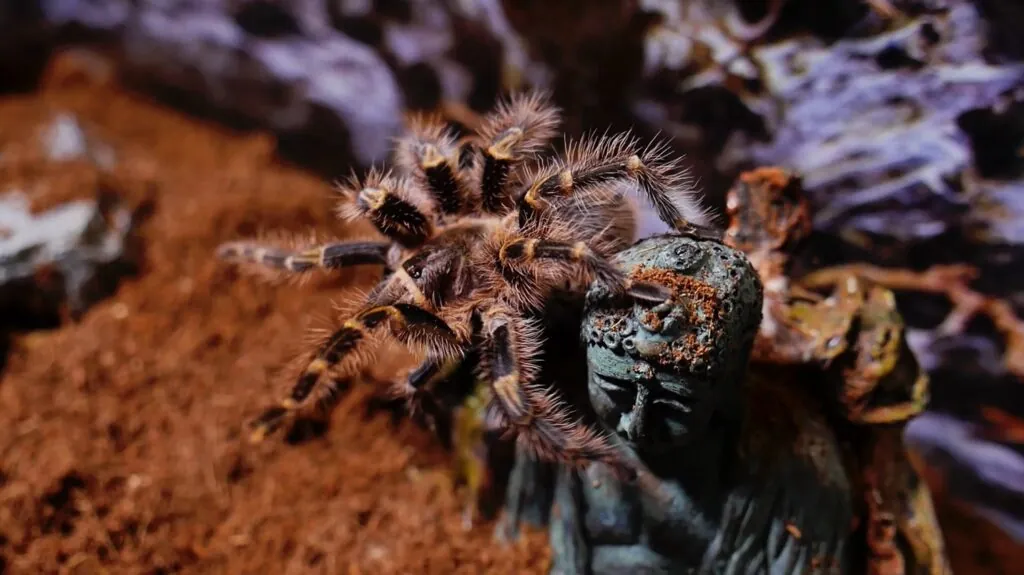
The Brazilian Giant Tawny Red Tarantula (Grammostola pulchripes), also known as the Chaco Golden Knee, is a significant species native to Paraguay and Argentina. It features a body length slightly shorter than the Goliath Birdeater, with a leg span reaching up to 22 cm (8.5 inches). The body mass of this tarantula is comparable to that of the Grammostola anthracina. Known for its striking appearance, the Brazilian Giant Tawny Red Tarantula, one of the largest spiders ever, has a dark brown body adorned with distinctive golden stripes on its legs. This terrestrial species prefers dry environments and burrows into the ground for shelter.
6. Colombian Giant Tarantula
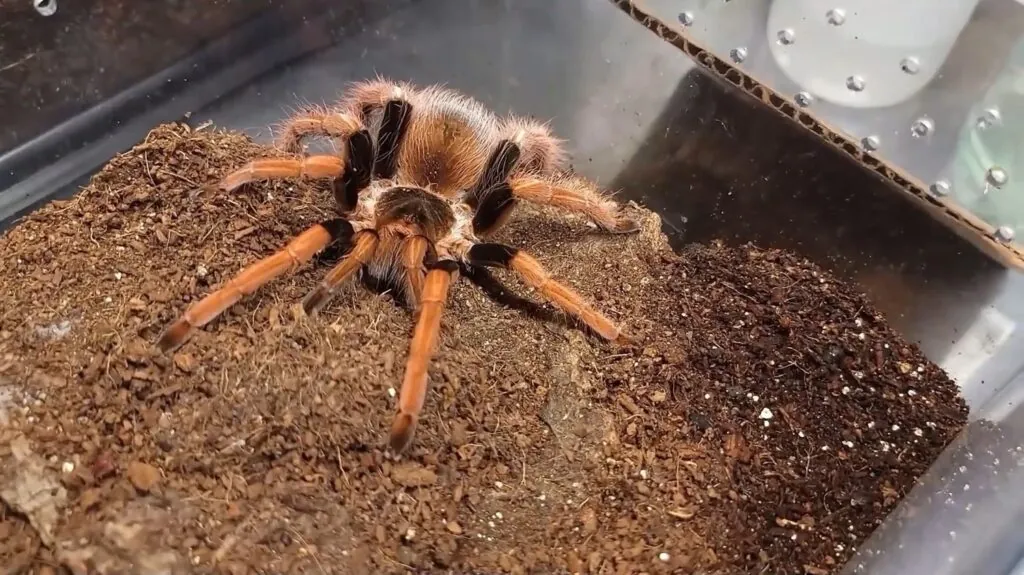
The Colombian Giant Tarantula (Megaphobema robustum), native to Brazil and Colombia, is a remarkable species in the tarantula family, known for its significant size and striking appearance. This tarantula typically has a body length that varies but is substantial, with a leg span ranging from 15 to 20 cm (6 to 8 inches). Although its body mass is less than the top five largest spiders, it is still a formidable presence. The Colombian Giant Tarantula’s distinctive features include a dark brown to black body with reddish hairs on its legs and abdomen. It inhabits tropical rainforests, where it constructs burrows and preys on insects, small mammals, and amphibians.
7. Face-Sized Tarantula
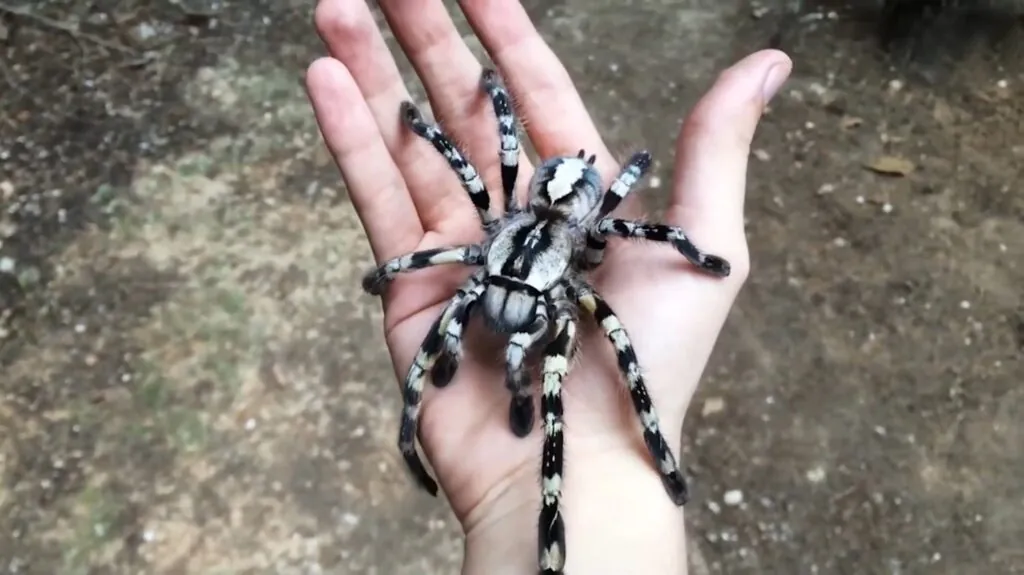
The Face-Sized Tarantula (Poecilotheria rajaei) is considered one of the biggest spiders in the world native to Sri Lanka and India. This tarantula earns its name from its impressive leg span, which can reach up to 20 cm (8 inches), roughly the size of a human face. It has a body length of around 8 cm (3.1 inches) and a body mass comparable to the Colombian Giant Tarantula. The Face-Sized Tarantula is known for its vibrant and intricate patterns, featuring a combination of earthy tones with striking yellow and black markings on its legs. This arboreal species prefers to live in tree hollows and crevices, preying on insects, small rodents, and occasionally birds.
8. Hercules Baboon Spider

The Hercules Baboon Spider (Hysterocrates hercules), a notable but elusive species, is known for its significant size among large spiders. This species, native to Nigeria, is rarely encountered, with only one specimen ever found. The Hercules Baboon Spider has a body length of around 8 cm (3.1 inches) and a leg span reaching up to 20 cm (8 inches).
In spite of the limited data on its body mass, it is recognized as a substantial spider within its genus. It typically inhabits burrows and is characterized by its robust, dark brown body and thick legs. The scarcity of specimens makes it a subject of intrigue and interest in the arachnological community. On the related note, got the scoop of Sydney funnel-web spider, one of the most venomous animals in the world.
9. King Baboon Spider
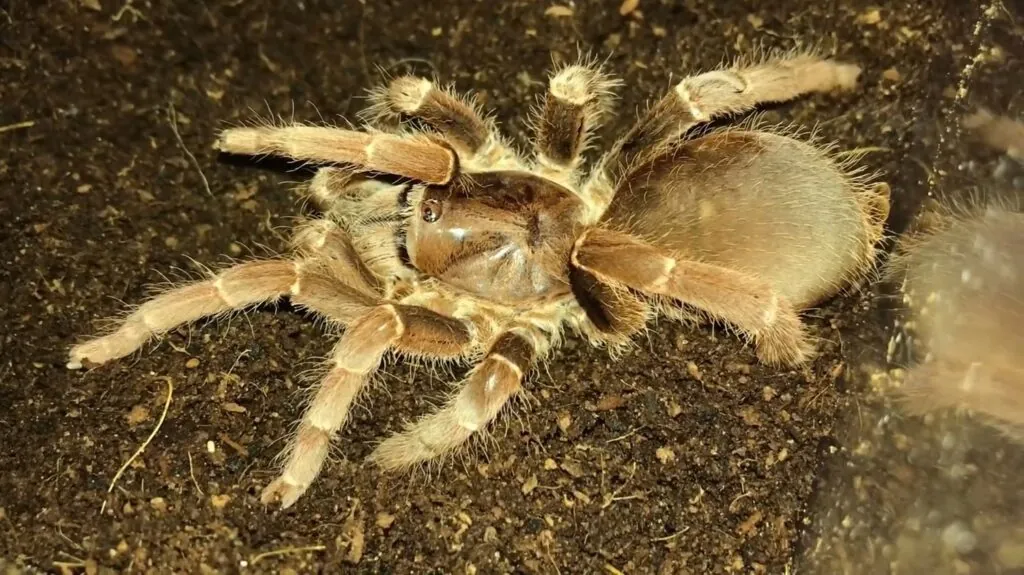
The King Baboon Spider (Pelinobius muticus), native to East Africa, is a formidable arachnid known for its impressive size and distinctive features. It has a body length of around 8 cm (3.1 inches) and a leg span reaching up to 20 cm (8 inches). Although its body mass is lesser compared to the Brazilian giant species, the King Baboon Spider is renowned for its robust build and powerful legs, which are adapted for digging extensive burrows. Its coloration ranges from reddish-brown to orange, adding to its striking appearance. This terrestrial species is known for its defensive behavior, often displaying aggressive postures when threatened.
10. Chilean Rose Tarantula
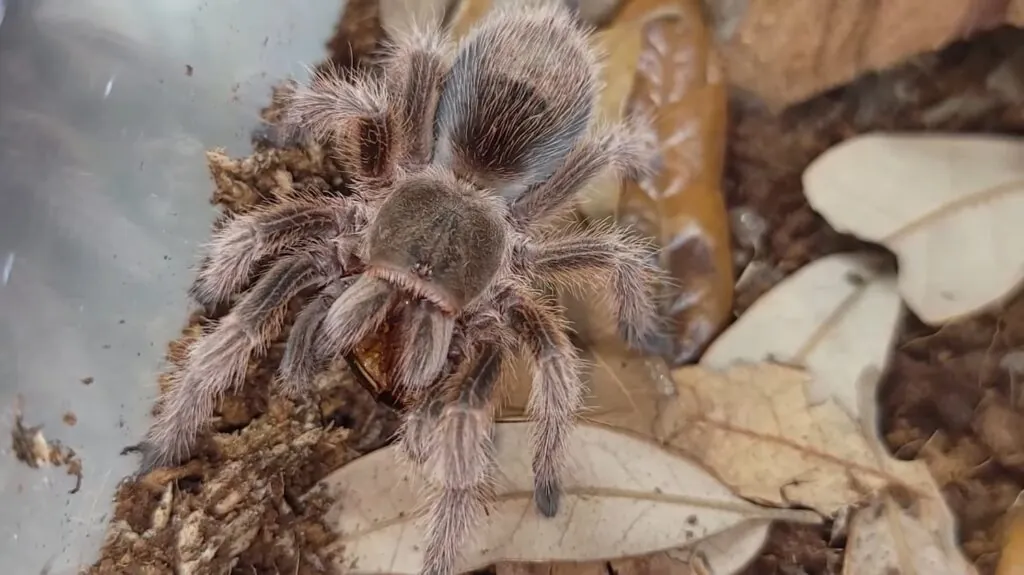
The Chilean Rose Tarantula (Grammostola rosea) is a notable species native to Chile, Bolivia, and Argentina. It has a body length of around 7.5 cm (3 inches) and a leg span reaching up to 18 cm (7 inches). Although its body mass is lesser than most of the larger tarantulas listed above, it remains a significant presence among large spiders. The Chilean Rose Tarantula is easily recognized by its rose-colored carapace and dark brown body, often adorned with pinkish hairs. This terrestrial species prefers arid environments and is known for its docile nature, making it a popular pet among tarantula enthusiasts.
In ranking the largest spiders in the world, this article considers both body mass and leg span as primary criteria, highlighting the biggest spiders in the world by their impressive physical dimensions. Each spider’s size is assessed based on its maximum recorded body length and leg span, providing a comprehensive view of their grandeur. While body mass offers insight into the spider’s overall bulk and weight, leg span reveals the extent of its reach and impressive span.
By evaluating these factors, the list showcases the biggest spiders in the world, each remarkable for its unique contributions to the world of large spiders, from the Goliath Birdeater’s imposing mass to the Chilean Rose Tarantula’s distinctive charm.



